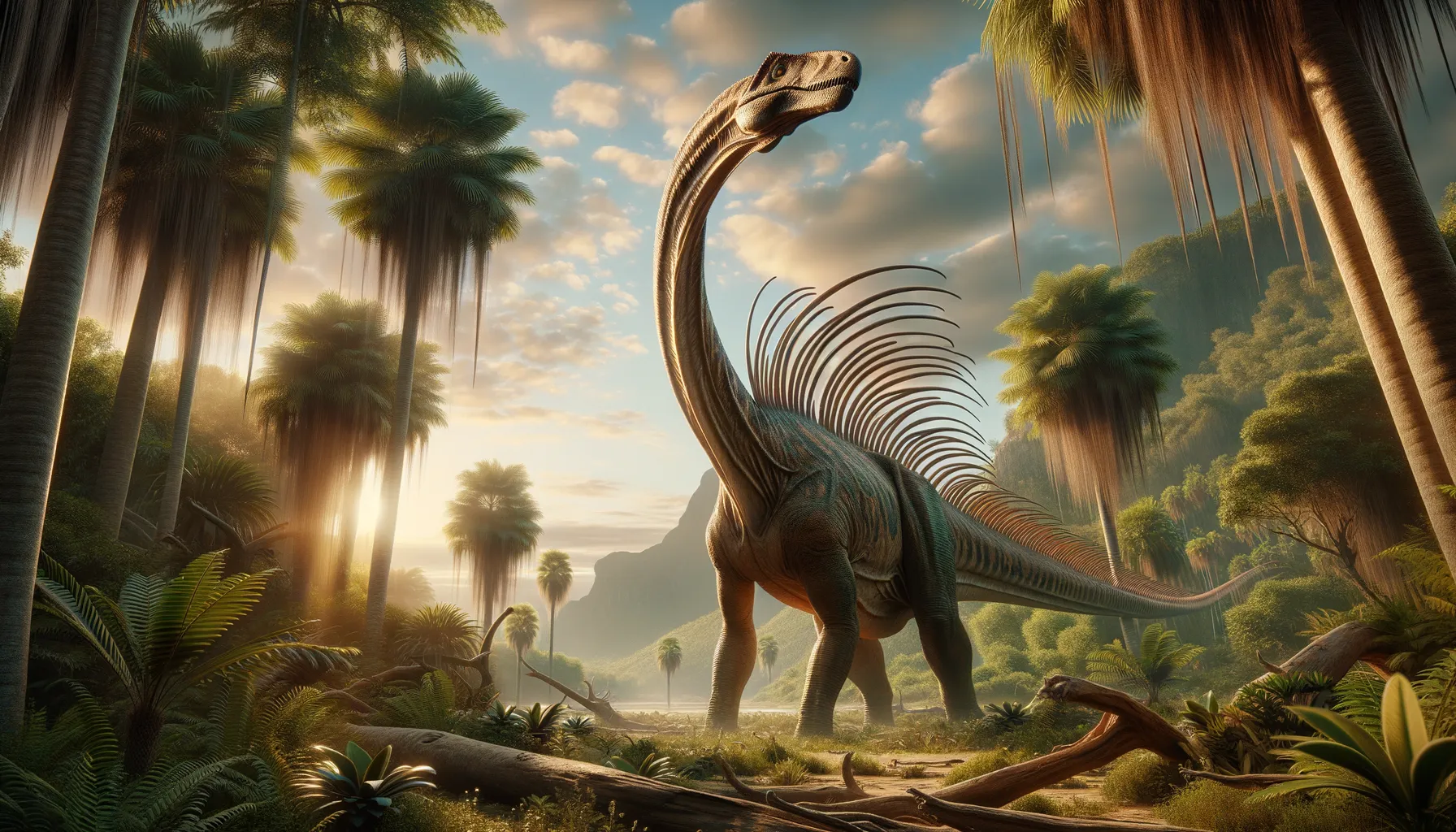
Agustinia
The long-necked giant with a spiny twist.
Period
Cretaceous
Length
Around 50 feet long.
Height
Approximately 15 feet tall.
Weight
Estimated to weigh about 4 to 6 tons.
Agustinia was a large, long-necked dinosaur from the Cretaceous period. Known for its unique, elongated spines along its back, Agustinia was a giant herbivore that roamed what is now South America. Though less famous than its relatives like Diplodocus or Brachiosaurus, Agustinia's distinctive body structure makes it a fascinating subject of study for understanding sauropod diversity and adaptability.
Diet
Agustinia was a herbivore, feeding primarily on plant material. Its long neck allowed it to reach high vegetation, as well as sweep low ground for food. Likely consuming a variety of ferns, conifers, and other prehistoric plants, it played a significant role in its ecosystem.
Hunting
Being a herbivore, Agustinia did not hunt for prey. Instead, it spent much of its time browsing for food across the prehistoric landscape. Its size would have been a deterrent against most predators.
Environmental challenges
Agustinia faced challenges such as finding sufficient food to sustain its large body in varying climates. It also had to navigate the threat of predation from large carnivorous dinosaurs. Seasonal changes could impact the availability of plant resources, influencing its migratory patterns to seek better feeding grounds.
Speed
Likely slow-moving due to its massive size.
Lifespan
Lifespan likely extended, similar to large herbivorous dinosaurs.
First discovery
First discovered in Argentina by Dr. José Bonaparte in 1997.
Fun Facts
- Agustinia is named after the discoverer, Agustin Martinelli, who found its fossils in Argentina.
- It lived during the Early Cretaceous period, approximately 116 to 100 million years ago.
- Agustinia is known for its unique armor, which included bony plates and spines covering its back.
- Despite its armor, Agustinia was a herbivore, feeding mainly on plants and trees.
- This dinosaur's fossils are scarce, which means paleontologists still have much to learn about it.
- Agustinia belonged to a group of dinosaurs known as sauropods, which are famous for their long necks and tails.
- Agustinia's unusual armor has led to some confusion about its exact placement in the dinosaur family tree.
Growth and Development
Agustinia underwent a long growth period, reaching its immense size over several years. Young Agustinia would have been more vulnerable to predators until reaching a larger size. Like other sauropods, it likely experienced rapid growth spurts during its juvenile stages to minimize vulnerability.
Habitat
Agustinia inhabited forested regions of what is now South America, where vegetation was abundant. Its presence suggests a lush, green environment with plenty of plant life to support its diet. The climate would have ranged from semi-arid to humid, dependent on the season and regional variation.
Interaction with other species
Agustinia likely coexisted with a variety of other herbivorous dinosaurs, competing for similar food sources. It would have shared its environment with predatory dinosaurs, which posed a threat particularly to younger and smaller individuals. Through social group living, it might have enhanced its chances of survival against predators.
Natural lifespan
Agustinia's natural lifespan was likely several decades.
Reproduction
Reproduction in Agustinia probably involved laying a clutch of eggs in sandy or secluded environments. Like other dinosaurs, parental care might have varied, though it likely involved some level of protection or site selection for egg-laying. The social behavior of the species could have played a role in the protection and success of its offspring.
Social behaviour
Agustinia may have lived in herds, which would provide safety in numbers from predators. Social behavior might have included communication through body language or vocalizations. Living in groups would have facilitated shared knowledge of food sources and migratory routes across vast landscapes.
Fossil locations
Fossils of Agustinia have primarily been found in Northwestern Argentina, providing crucial insights into its existence in the Cretaceous period. These sites have helped paleontologists piece together the life and environment of this unique sauropod. Continued exploration in South America holds the potential for discovering more specimens and associated fauna.
